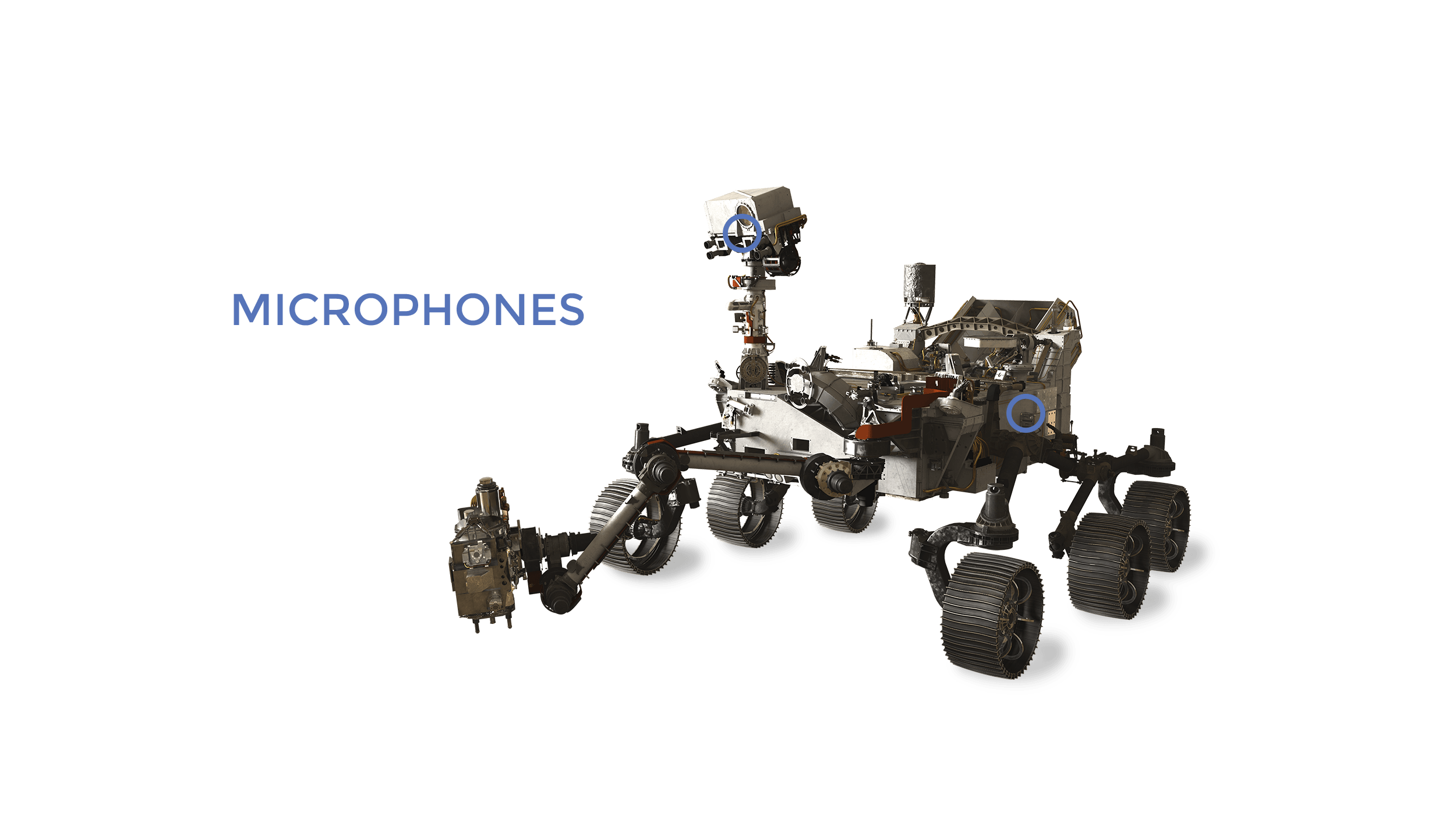Microphones on the Perseverance Rover
Robots have replicated much of the human sensory experience on Mars. Cameras have given us sight, robotic hands, arms and feet have supplied touch, and chemical and mineral sensors have let us taste and smell on Mars. Hearing is the last of the five senses we have yet to exercise on the Red Planet.
When the Perseverance rover arrives at Mars, it will have two microphones. It will make it possible for our robots to not only touch and taste, but finally hear, the sounds of Mars.
NASA spacecraft that traveled to Mars in the past have carried microphones twice. Unfortunately, one of those missions, the Mars Polar Lander, failed. The Phoenix Lander had a microphone on the spacecraft’s descent camera, but that instrument was never turned on.
Recording the Sounds on Mars
Engineers have equipped Perseverance to be a good listener. It has Entry Descent and Landing (EDL) microphones that will record the sounds of landing. SuperCam's toolkit also consists of a microphone that will help study Mars rocks and soil. We may even be able to hear the sounds of the rover itself!Microphone on SuperCam
SuperCam identifies minerals and rock compositions, and it seeks organic compounds that could be related to past life on Mars. It has a laser that can zap and study areas on a rock as small as the period at the end of this sentence. All from about 20 feet, or 7 meters away. Its camera and spectrometers then examine the rock's chemistry. The microphone on SuperCam gives scientists another "sense" with which to probe the rock targets they are studying.Tech Specs
- Main Job To help study Mars rocks
- Location On a short 15 mm boom on the head of the rover’s long mast
- Listening when when the SuperCam instrument is on, for a few milliseconds at a time. Or to listen to wind and for rover sounds for about 3.5 minutes at a time.
- Weight 30 grams, or about 1 ounce
- What it can hear the staccato pop caused when the laser studies rock, wind, and rover noises
Hearing the Sounds of a Laser Firing
When SuperCam fires a laser at a rock, a small amount of the rock vaporizes into a hot gas called "plasma", and heat and vibration creates a shockwave that makes a popping sound. SuperCam’s camera and spectrometer can "read" the hot gas to reveal the chemical makeup of the vaporized rock. At the same time, the microphone hears the staccato "pop" as the laser strikes rock several feet away from Perseverance.The kind of "pop" it makes tells scientists about the mass and makeup of the rock. The intensity of the sound reveals the relative hardness of the rocks, which can tell us more about their geological context. For example, the hardness of the rock can help tell us whether the rock was formed in a lake or from wind-driven material, or how much pressure was involved in its formation. All without ever driving up and touching it.
SuperCam can listen for about 3.5 minutes at a time while performing science observations. This gives the rover the chance to hear the sounds of Mars, such as the high-pitched sound of sand grains over the surface, the wind whistling around the rover mast, and low-pitched howls of dust devils passing by. The microphone also records sounds of Perseverance using its arm, coring rocks, and the wheels crunching against the surface. The rover may hear the other instruments, internal mechanisms, and hear when we drop off the sample tubes. In some cases, sound can help the team diagnose the health of the rover's internal mechanisms or instruments.
Microphone to Record the Rover's Landing
Mars 2020's Entry Descent and Landing (EDL) system is similar to Mars Science Laboratory/Curiosity, but it carries a microphone with which to record the sounds of descent. This microphone records audio as the Perseverance rover descends to the surface. We may hear the friction of the atmosphere, the winds, and the sounds of dust displaced as the rover lands.Tech Specs
- Main Job To record the sounds of landing
- Location The EDL mic's "brains" are inside the body of the rover; its "ears” are on side of the rover body
- Operating as the rover descends on Mars
- Recording the sounds of descent, friction from the atmosphere, dust blown up by the thrusters as the rover descends


